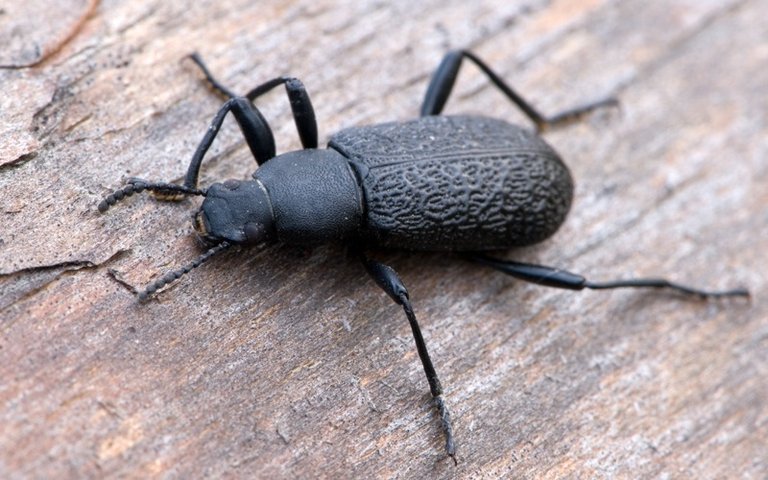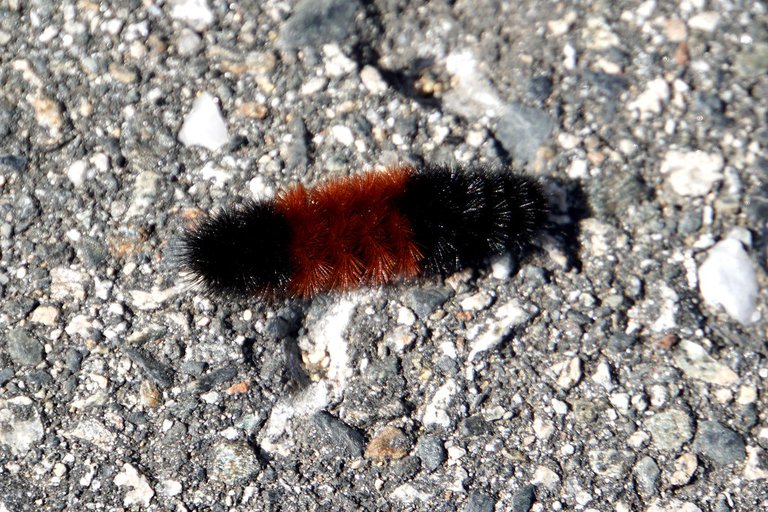My cousin came home from Canada and we have been having fun. You know that Ara kanada ti de ooo (interpretation -: Canadians are back) lifestyle, where they start to tell you everything and anything including the things you are not interested in. When they come to Nigeria, they complain about almost everything as though they didn't leave the country to go live in other countries.
The only thing they never complain about is the Food and it looks like it is culture for them all as they claim to have missed home made food as if there are no African Restaurants and stores abroad. My cousin complained about everything from the police to traffic, organization, and he even complained about not experiencing snow in Nigeria. This actually got me thinking if he was intentionally making those complains but in his conversation, he mentioned that the bugs are usually silent during snow time so where do those bugs go?
The sounds of crickets and beetles quiet down during winter and so are also other animals and this can go for up to six months in the arctic. It is no doubt that these insects have been able to beat the winter even when they are small, delicate and live a short life as a result of their short lifespan. For some, they just allow themselves to be buried in snow and they come out looking fresh once winter is over.
Some insects are able to freeze majority or all part of their bodies in other to protect their organs needed for survival. For example, the Alaskan beetle uses cryoprotectants to protect themselves from freezing. This helps it to be able to identify the area of the body that would freeze and the part of the body would be protected. We know that when ice forms in the body, it leads to expansion which destroys body cells and tissues leaving the ones that do not get destroyed out of water.
It isn't only insects that are able to do use cryoprotectants to keep their internal organs from destroying, vertebrates like the wood frog does the same as well. While some use cryoprotectant to keep some part of their bodies, others use it to protect their entire body. Caterpillars like the woolly bear caterpillar has coats around its body to protect it and keep it warm but also internal machinery to help it survive temperature as harsh as -70 degrees Celsius where their cryoprotectants attach to the body of caterpillars to prevent ice from going further into its body in a process known as ice nucleation control.
Snow fleas is one of other insects that is able to move around even in the snow as it is able to control the crystals in its body and this is also present in other types of animals like the Arctic cod, and antarctic ice fish. While snow fleas are flying in the cold, insects like the dragon fly can live under water during extreme cold periods and they grow under the water during this period. Insects like water beetle use air sacs to help them breath on the water for a long time before refilling outside.
Not all insects are built equally, so while some are able to remain active in the cold, some would need to find warm places to hide. Some insects would need to dig deep into the earth to find warmer areas than the surface of the earth. Insects like ants do this, and they also stick together so they can be able to get extra warmth from themselves. Vertebrates like frogs and turtle also do this and they remain dormant at that point until the harsh weather is gone.
Some insects can even stop growing for a long time until the weather condition is suitable for them, also some would require the help of other organisms to keep them warm like ladybugs that come together under a tree back to be able to share warmth and body heat. These animals go through a lot of things to stay alive and I am not surprise since every specie on earth is designed to survive and we do so in different ways.
https://www.sciencedirect.com/science/article/abs/pii/S0939641113001604
https://taylorandfrancis.com/knowledge/Medicine_and_healthcare
https://pmc.ncbi.nlm.nih.gov/articles/PMC6452075/
https://www.eje.cz/pdfs/eje/2016/01/73.pdf
https://www.researchgate.net/publication/232694431_Cold_Hardiness
https://www.sciencedirect.com/science/article/abs/pii/S0022191002002068
https://agriculture.vermont.gov/introduction-snow-fleas
https://www.healthline.com/health/snow-fleas
https://www.wildlifebcn.org/sites/default/files/2018-06
https://entnemdept.ufl.edu/molecrickets/mcri0201.htm
https://www.researchgate.net/publication/230346829_The_underground_life


 Follow
Follow 


